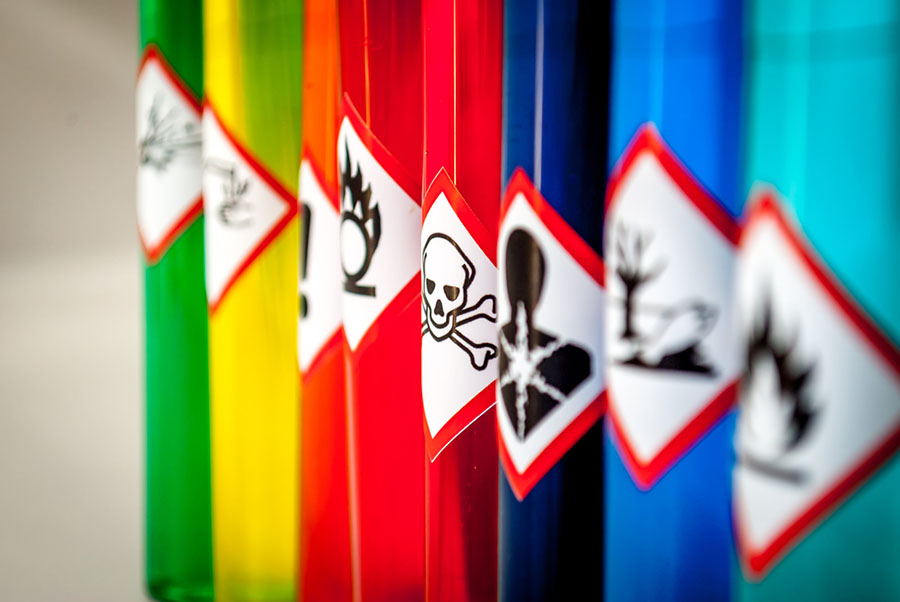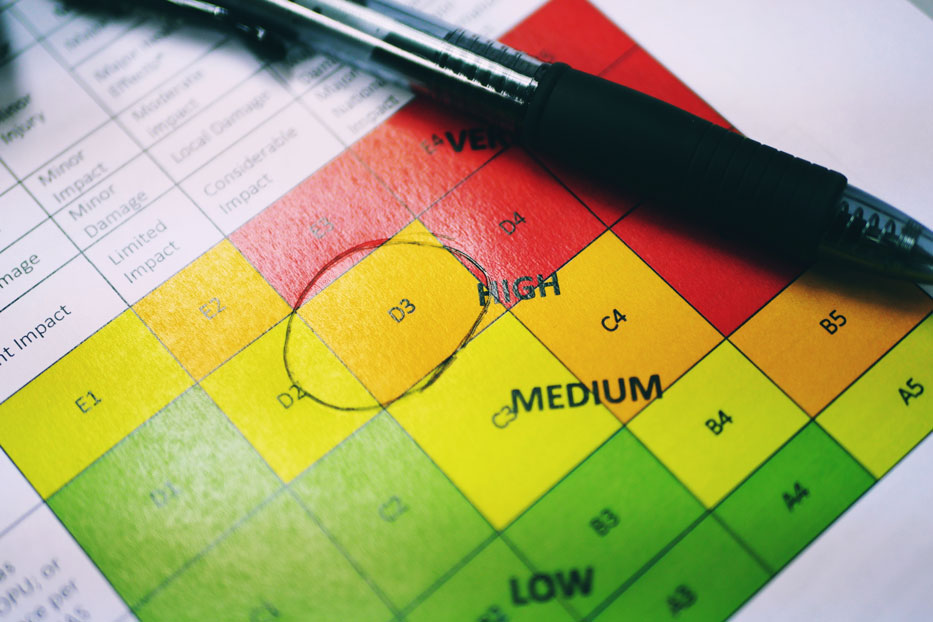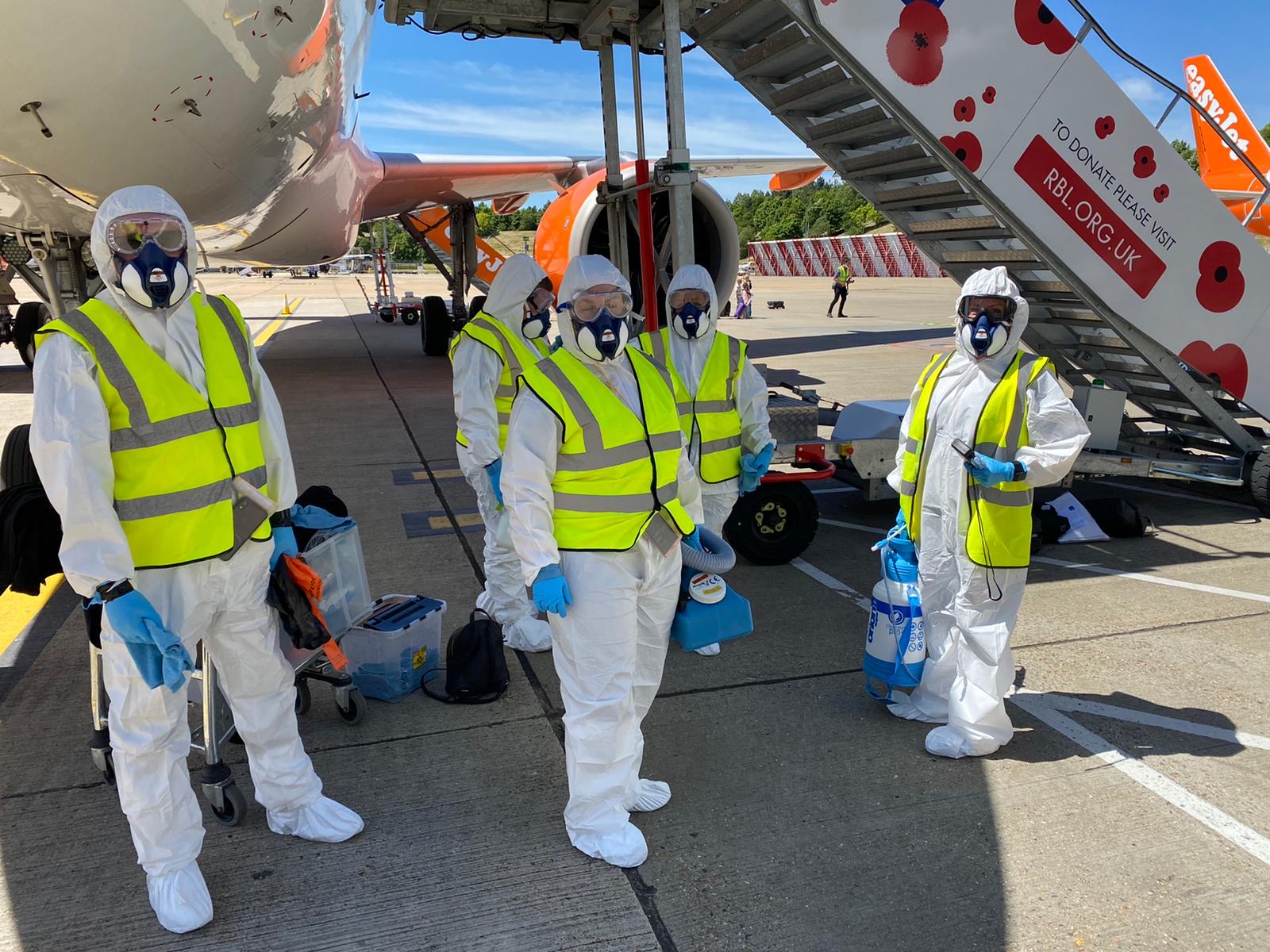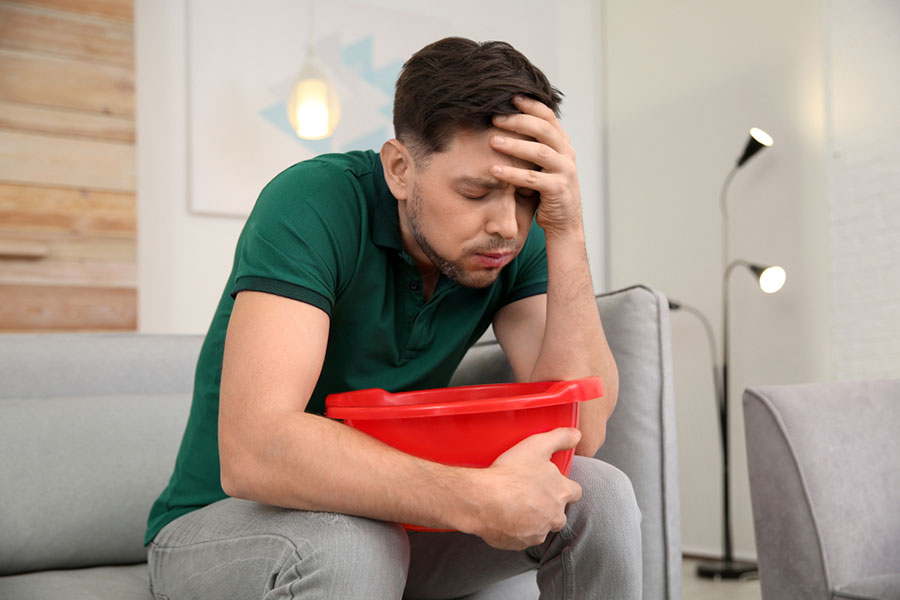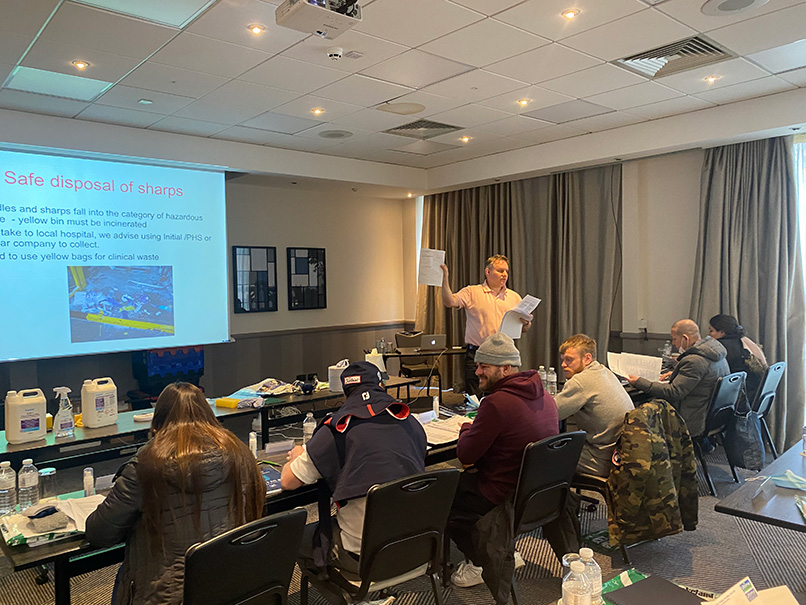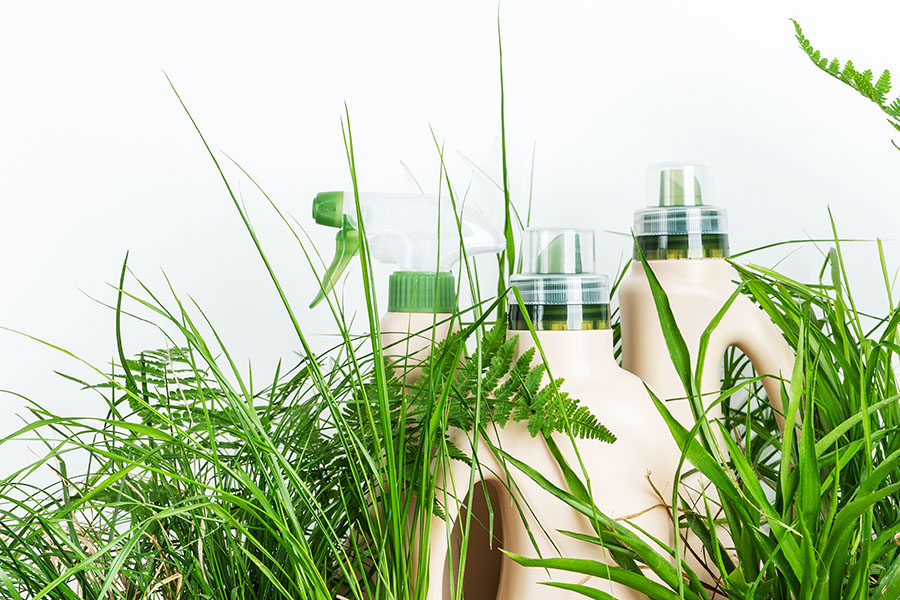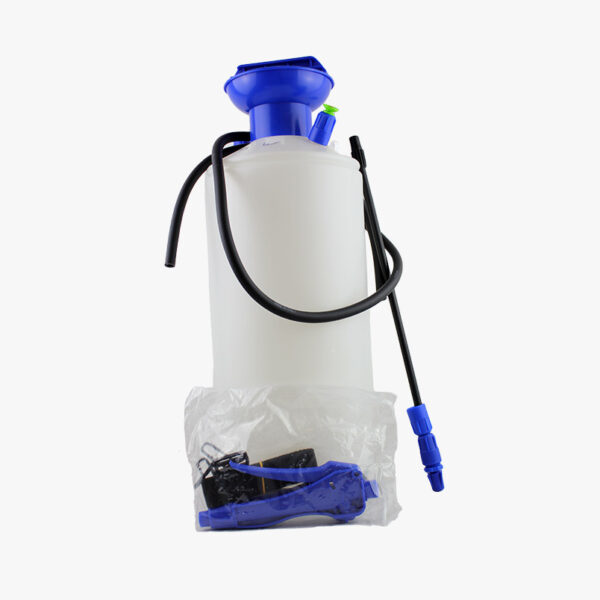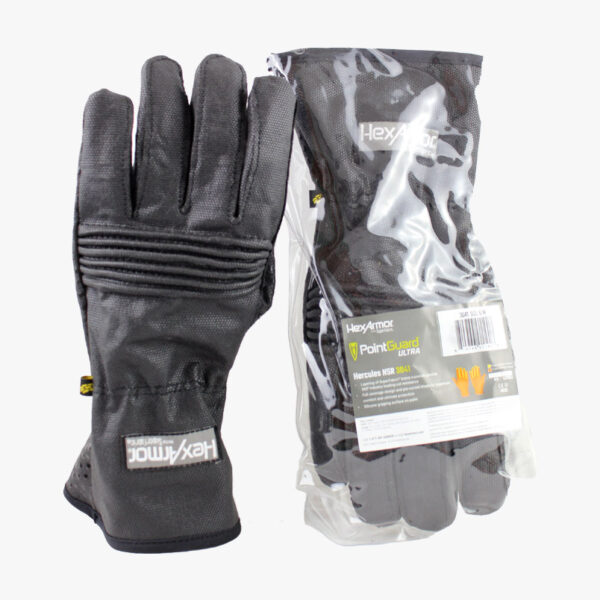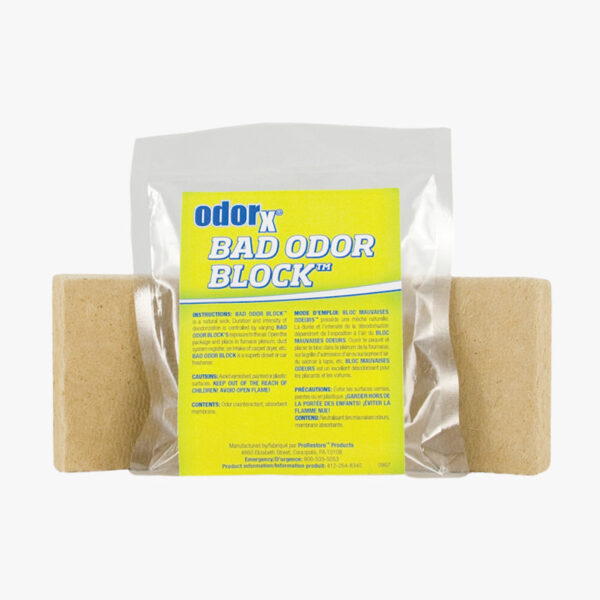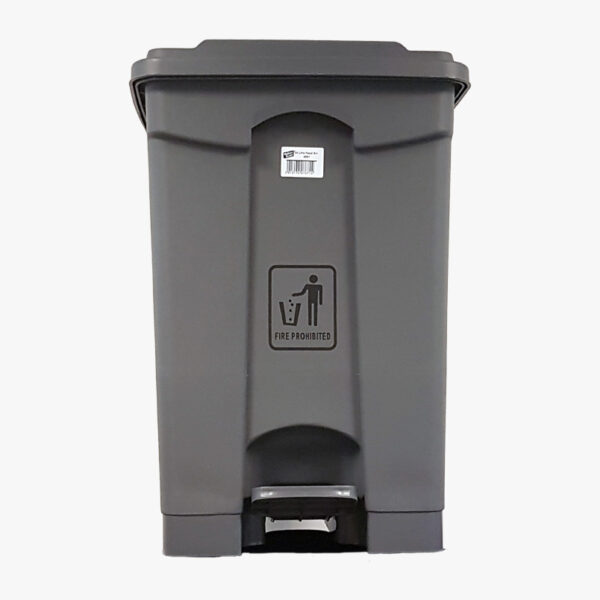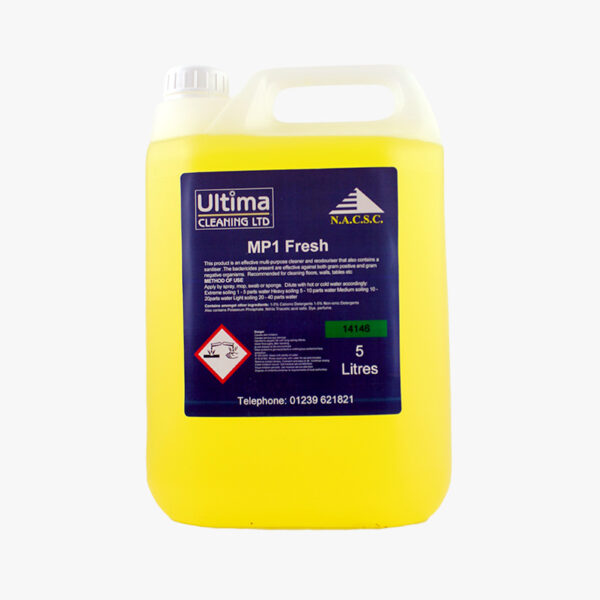Maintaining a hygienic work environment has never been more important, especially following the COVID-19 and Monkeypox outbreaks.
Statistics show that proper commercial cleaning reduces the risk of employees catching common viruses like the flu by an impressive 80%.
Keeping your office clean is crucial, but did you know that cleaning products can be bad for your health?
In this blog post, we will discuss the health risks associated with cleaning products and how you can keep your employees safe.
What are the potential health risks of using cleaning products?
Inhaling chemicals while cleaning can cause respiratory problems and may lead to various health complications.
Hazardous substances also create an occupational safety risk and can cause indoor air pollution if handled incorrectly.
Here are some potentially harmful chemicals found in common household cleaning products like all-purpose cleaners, glass cleaners, and toilet bleach:
- Phosphates
- Chlorine
- Ammonia
- Sodium lauryl sulphate
Three potential health risks of using cleaning products
-
1. Skin and eye irritation
Many of the chemicals in cleaning products are toxic or corrosive.
- Exposure can cause eye irritation and a variety of skin allergies, including dermatitis. Some strong cleaning products may also cause chemical skin burns and serious eye damage if suitable personal protective equipment (PPE) is not used.
-
2. Breathing difficulties
There is evidence to suggest that cleaning products can increase the risk of developing occupational asthma.
According to a report by the Health and Safety Executive (HSE), various chemicals in cleaning products have been reported to cause respiratory health problems, particularly chlorine agents and bleaches.
What are the symptoms of inhaling cleaning products?
Inhaling cleaning products can be extremely dangerous and lead to a wide variety of breathing issues. Some common side effects of inhaling cleaning products include:
- Coughing
- Headaches
- Breathing difficulties
- Sore throat and nose
-
3. Cancer
Various cleaning products – including disinfectants, household cleaning sprays, and air fresheners – contain potentially carcinogenic compounds that could increase your risk of cancer.
For instance, one medical study found that women who used cleaning products regularly were twice as likely to have been diagnosed with breast cancer when compared to women who didn’t use cleaning products.
How can I protect employees from the chemicals in cleaning products?
Most of the chemicals in cleaning products have low toxicity and will only cause mild symptoms. However, strong cleaning chemicals can cause serious health complications which is why you must take steps to protect your employees.
Identify potential health hazards
The first thing you need to do is identify what occupational safety risks are associated with the cleaning products you use in your workplace.
You should also carry out a risk assessment to highlight specific hazards and decide what steps you should take to reduce the risk.
You can find lots of useful information by visiting the COSHH website.
Provide suitable PPE
Providing suitable PPE is one of the most effective ways to minimise exposure to potentially hazardous substances.
For instance, wearing a face mask will help your employees avoid the unpleasant side effects of inhaling cleaning products. While safety gloves can protect users from chemical burns and skin irritation when handling cleaning products.
What to do when you inhale bleach
Chlorine bleach contains dangerous chemicals, and accidentally inhaling bleach fumes can cause serious health problems.
You should seek emergency medical attention if a person inhales bleach and shows signs of poisoning which may include:
- breathing difficulties
- coughing and wheezing
- chest tightness
- blurry vision
- abdominal pain
- pain or burning in the nose, mouth, or eyes
- nausea and vomiting
The Personal Protective Equipment at Work Regulations 1992
Regulation 4 of the legislation states:
“Every employer shall ensure that suitable personal protective equipment is provided to his employees who may be exposed to a risk to their health or safety while at work except where such risk has been adequately controlled by other means which are equally or more effective.”
Read our recent blog for PPE safety tips to help cleaners stay safe in the workplace.
Provide training for employees
It is essential that you provide employees with all necessary safety training before allowing them to handle potentially hazardous cleaning chemicals or other harmful substances.
You must teach your staff how to use PPE and handle cleaning products safely in the workplace.
The more training you provide, the less likely you will have to deal with accidents and health issues caused by chemical hazards.
For instance, sharps removal training will teach your employees what to do if they ever come across hypodermic needles or other used sharps in the workplace.
Use natural cleaning products
It is possible to make your own environmentally friendly products using everyday items like lemon juice and baking soda.
You can also purchase natural cleaning products that do not contain any chemicals that cause significant health risks or pollution.
There is a common misconception that the best cleaning product will contain many strong chemicals.
However, most natural cleaning products are just as effective, without posing a risk to your employees’ health.
Suggested reading: If you want to find out more about natural cleaning products, check out our blog: What is green cleaning and what are its environmental benefits?
Where should cleaning products be stored?
The safest way to store your cleaning products and other supplies like fabric softeners is to keep them in a dedicated room or cupboard.
Five storage tips:
- Store cleaning products in their original containers and keep them tightly sealed.
- Keep cleaning chemicals in a secure and well-ventilated room.
- Inspect cleaning products regularly for signs of damage.
- Keep flammable substances in fireproof containers.
- Never mix professional or household cleaners as it can produce toxic fumes like chlorine gas.
Protecting Yourself Against Indoor Pollution
In our pursuit of cleanliness, we often overlook the silent adversary lurking within our homes: indoor pollution.
It’s a byproduct of various cleaning agents and practices, but fear not, there are effective ways to shield yourself and your loved ones. Let’s explore some practical steps:
Embrace Ventilation
The simplest yet most effective strategy is ventilating your space. Fresh air works wonders in diluting the concentration of volatile organic compounds (VOCs) released by many cleaning products.
Ensure adequate airflow whenever you clean, especially in areas like the kitchen and bathroom. Open windows or use extractor fans to expel pollutants and invite clean air inside.
Rethink Air Fresheners
While it’s tempting to mask odours with air fresheners, they often contribute more to indoor pollution than they alleviate. Many contain terpenes, compounds that can react with the air to form particles that trigger respiratory issues and migraines.
Consider alternatives like essential oils, which offer a more natural fragrance without harmful side effects.
Adopt Greenery
Houseplants are not just decorative; they’re your allies in combating indoor pollution. Certain plants, like spider plants and aloe vera, are known for their air-purifying qualities.
They absorb pollutants and release oxygen, making them an excellent natural solution to keep your indoor air clean.
Limit and Learn
It’s crucial to be mindful of the frequency and duration of your cleaning activities. Using cleaning products for prolonged periods can increase your exposure to harmful chemicals.
Learn about the ingredients in your cleaning products and opt for those with fewer chemicals.
Consult a Professional
If you’re uncertain about the safety of your cleaning practices or experience unusual symptoms, don’t hesitate to seek professional advice. A healthcare provider or cleaning professional can offer guidance tailored to your specific situation.
Summary
Cleaning products remove dirt, kill bacteria and viruses, and help you maintain a hygienic office environment.
However, the chemical ingredients in cleaning products can be harmful to human health and you must take steps to minimise the risk and keep your employees safe.
Buy professional cleaning products online
At Ultima, we offer a wide range of quality cleaning products from industry-leading brands like Byotrol. Visit the Ultima Store to browse our collection of professional sanitation products or get in touch with our specialists if you would like expert cleaning advice for your business.
FAQs
What are some examples of health hazards when using chemical cleaning agents?
- Eye, nose and throat irritation
- Coughing and breathing difficulties
- Skin rashes and burns
What happens if you inhale too much cleaning products?
This is why you should always use cleaning chemicals in a well-ventilated room.
What are the most harmful cleaning products?
What does COSHH stand for in cleaning?
COSHH (Control of Substances Hazardous to Health) places legal duties on businesses that use potentially hazardous chemicals in the workplace.
The guidelines require employers to take reasonable steps to control the risks associated with these substances to protect employees, e.g. by providing PPE.
